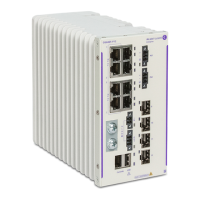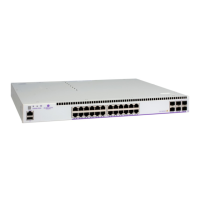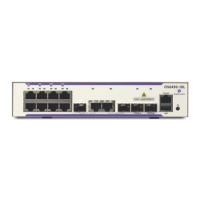Virtual Private LAN Services
7210 SAS M Services Guide Page 265
Multiple Spanning Tree
The Multiple Spanning Tree Protocol (MSTP) extends the concept of the IEEE 802.1w Rapid
Spanning Tree Protocol (RSTP) by allowing grouping and associating VLANs to Multiple
Spanning Tree Instances (MSTI). Each MSTI can have its own topology, which provides
architecture enabling load balancing by providing multiple forwarding paths. At the same time,
the number of STP instances running in the network is significantly reduced as compared to Per
VLAN STP (PVST) mode of operation. Network fault tolerance is also improved because a failure
in one instance (forwarding path) does not affect other instances.
The 7210 SAS implementation of Management VPLS (mVPLS) is used to group different VPLS
instances under single RSTP instance. Introducing MSTP into the mVPLS allows the following:
• Interoperation with traditional Layer 2 switches in access network.
• Provides an effective solution for dual homing of many business Layer 2 VPNs into a
provider network.
Redundancy Access to VPLS
The GigE MAN portion of the network is implemented with traditional switches. Using MSTP
running on individual switches facilitates redundancy in this part of the network. In order to
provide dual homing of all VPLS services accessing from this part of the network, the VPLS PEs
must participate in MSTP.
This can be achieved by the following:
• Configuring mVPLS on VPLS-PEs (only PEs directly connected to GigE MAN network).
• Assign different managed-vlan ranges to different MSTP instances.
Typically, the mVPLS would have SAPs with null encapsulations (to receive, send, and transmit
MSTP BPDUs) and a mesh SDP to interconnect a pair of VPLS PEs.
Different access scenarios are displayed in Figure 41 as example network diagrams dually
connected to the PBB PEs:
• Access Type A — Source devices connected by null or Dot1q SAPs
• Access Type B — One QinQ switch connected by QinQ/801ad SAPs
• Access Type C — Two or more ES devices connected by QinQ/802.1ad SAPs
